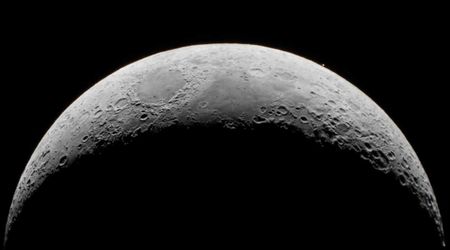Surreal photos of June’s 'Strawberry Moon' are breaking the internet. See here

The full moon on the night of June 10, 2025, was rather different as it was the Strawberry Moon of June. People on the internet were in awe of the images that captured the mesmerising phenomenon, showing the Moon in a red hue at the horizon due to its low position, as light passed through the dense atmosphere. According to NBC News, the name does not signify the color of the Moon, but is an indication of the Moon of the summer when strawberries are harvested.

Skywatchers marked the event with their cameras when the Moon was at its most southern position on the eastern horizon, as per LiveScience. The last time this event occurred was in 2006. The images captured the full Moon rising over the Torre del Serpe in Otranto, Italy, and passing by the tip of the Empire State Building.

Some images also perfectly captured people enjoying the sight, be it in New York or China. A photographer in Iraq had also captured a man playing violin against the Moon’s backdrop. This celestial event was a great opportunity for people to showcase their unique perspectives and share them with the world.

The rare hue caused by the ‘Moon Illusion’ was visible in New York City, Florida, the U.K., and Cyprus. The brightness of the full Moon peaked at 3:44 a.m. ET on June 11, 2025. The low position of the celestial object was caused by an event known as the 'major lunar standstill' or 'lunistice.'

Based on the cycle of the Moon, the moonrise and moonset shift from the northernmost to southernmost limits and back. At one point, they reach a maximum distance between each other at the horizon, when they are the most apart, known as the lunistice. The major lunar standstill happens every 18.6 years, and it stays the same for two years.

After 2025, the path of the Moon will start shifting until the next standstill in 2043, making the 2025 Strawberry Moon a unique sight. The Moon illusion not only made the celestial object appear a shade of pink and orange, but also made it look extremely huge at the horizon. A view of the southeast horizon, unobstructed by the landscape, provided the perfect visual of the moon.

Full moons are given traditional names locally in relation to changes in seasons or similar natural events, according to The Old Farmer’s Almanac. They are derived from several locations, such as Native American, Colonial American, and European sources. ‘Strawberry Moon’ was initially used by the people of Native American Algonquian tribes in the northeastern United States and the people of Ojibwe, Dakota, and Lakota.

These communities use the term to mark the beginning of strawberry harvest season, when the fruits are ripe. June is a time of abundance as the flowers bloom and fruits ripen, which is also reflected in the Haida term "Berries Ripen Moon." The Indigenous cultures also use the terms “Birth Moon” and “Hatching Moon” in reference to the time when animal babies are born.

In Europe, June was also traditionally considered a month for marriage, naming the full moon “Honey Moon” and “Mead Month.” The Moon cycle is faster than the sun, and the shifts in rising and setting change positions every 27 days. “Through its phases, the Moon acts as timekeeper for societies around the globe, past and present,” stated UK archaeologist and historian Jennifer Wexler.

The Moon was spotted shining near the famous red star Antares, and was best seen by the naked eye. A Moonrise calculator can help discern the time and position for the perfect sight during similar celestial events. Stargazers were suggested to find a spot that had a view of the southeast horizon, unobstructed by the landscape.

People were prepared with small telescopes and binoculars to capture the sight, as enthusiasts targeted their cameras. The images stopped the moment in time as each photograph captured a unique perspective of the rare, low-lying moon in the night sky. The moon rose over cityscapes and landscapes, decorating the natural portrait with its once-in-a-lifetime presence.









